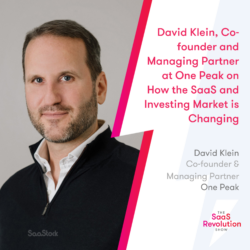This is a guest blog post by Scott Maxwell, Founder and Senior Managing Partner at OpenView.
In 2011, one of the most anticipated trans-continental launches since the Beatles took place when Sweden’s Spotify began offering its services in the U.S.
Since that time, Spotify has racked up some 18.2 million U.S. users, pulled off a successful IPO and made music streaming common. But things don’t always go that smoothly. Powa Technologies, for instance, expanded too rapidly into the U.S. and imploded in 2016. AR startup Blippar also recently shut its Mountain View office and is exiting the U.S. market.
As with most things, there’s no way to completely failure-proof yourself, but there are ways of tilting the odds in your favor. Many of those are rudimentary, but it’s a simple rule that would-be conquerors most often ignore: be humble.
The business concerns that trip up expansion
Companies that consider U.S. expansion are usually having success in their smaller home market. Their ambitions outstrip that market though and the U.S. stands as a formidable challenge. Because the U.S. market is so large and so competitive, winning here is a way of proving your mettle.
Marketing and sales
But such confidence can be counterproductive. Often, companies underestimate their marketing and sales budget, surmising that the technology will sell itself. This happens when the founder is a techie who discounts marketing and sales or views it as a necessary evil. Of course, this happens in home markets too, but underfunding can be especially crippling for foreign expansion.
This is true across the board: Retailer Target’s quixotic play for the Canadian market faltered because the company chose cheaper, out-of-the-way locations that didn’t look as good as Target’s U.S. locations.
Hiring
Another common problem is finding talent. One particular problem in U.S. expansion is that super-talented people often prefer working with a company from their native country than a foreign firm. Think about it: If you were a hotshot engineer, would you rather work for Google or Siemens? Some see foreign companies as second-tier, even if that’s not the case.
Many companies do not realise this and are often arrogant about their ability to hire locally. They overestimate their ability to assess talent in a foreign market. Getting help with hiring from local people is paramount.
Customers
One critical component for success is a solid connection between the home office and whichever country you are entering. The best way to do that is to have someone who is senior and customer oriented who comes over to establish the office and transfer the company culture, knowledge and know-how and get out in front of customers to help them understand the local differences and build out the team in the U.S. They need to be here long enough for that foothold to take place.
The cultural issues that trip it further
To add to the potential hazards, businesses entering the U.S. also have to navigate cultural differences. Not reading the U.S. market closely, for instance, will result in failure if you merely assume you can recreate your launch strategy in the U.S. instead of catering it to the market.
Companies that come from a culture that is similar to the U.S. but smaller have a big advantage. Markets like Northern Europe, Australia/New Zealand or Canada fit that description because English is widely spoken, tech is widespread and there is a level of affluence that rivals or exceeds the U.S.
Yet with the case of hiring, even they can mess it up.
The Solution?
Businesses that want to make a successful transition need to be confident enough to think they can do well in America but be humble enough to ask for help from the locals. This can be hard to pull off, but not impossible. Logz.io (an OpenView investment), for instance, has made a smooth transition from Israel to the U.S. market and now has a 30-person presence in Boston.
Of course there are exceptions to this rule for humbleness, like Spotify. The Swedish music streaming company certainly didn’t come off as humble – it predicted it would rack up 50 million subscribers in its first year. But recall that Spotify’s launch really was anticipated. Unless you are seeing headlines in the tech press saying that your service is “finally” launching in the U.S., then you’re better off being humble instead of blustering.





